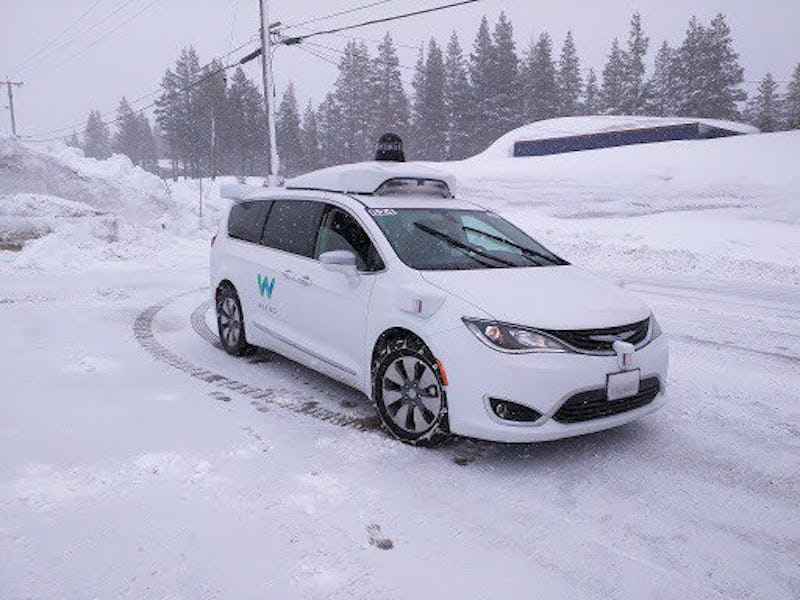Waymo’s Snow Tests Are Vital to the Future of Self-Driving Cars

Waymo took its self-driving family van on a ski trip this weekend, and the results could be vital for reaching full autonomy. The Alphabet company started life as the “Google car” project back in 2009, and although it’s racked up an impressive number of testing miles in the state of California, there’s still work to be done. Company CEO John Krafcik shared an image on Twitter Monday of one of the company’s test cars trekking through the snow by South Lake Tahoe.
Testing the sensors under these conditions is critical, as a number of technologies used in autonomous cars can fail in the snow. If it fails, it could turn out more dangerous than it would for a normal car.
Car autonomy is divided into five levels: level four and five, where the driver is never expected to take over, is the holy grail. Waymo is pushing for level four, where the car can drive itself around a designated area like a city. That avoids the issue of unexpected terrain, but even in the city, weather can wreak havoc.
If Waymo’s cars can drive themselves most of the time, but not in some conditions, they’ll fall under the definition of level three autonomy. That’s bad news for safety: Ford’s chief autonomous vehicles engineer Jackie DiMarco told Inverse that the level was something of a non-starter, as it could create the perfect conditions for relaxed, negligent drivers who are unprepared to take over for the A.I. when it fails.
Krafcik debuts a customized Chrysler Pacifica Hybrid that will be used for Google's autonomous vehicle program at the 2017 North American International Auto Show.
To jump past level three, Waymo needs to make sure its sensors can handle all terrain. Some self-driving car projects use camera feeds, interpreted by a computer, to drive the car. This is the approach favored by companies like AutoX, and it means using cheaper, more conventional parts to reach autonomy. Of course, in snowy conditions, the camera’s view could also get obstructed.
LIDAR, which stands for Light Detection and Ranging, uses laser pulses to measure distances between the vehicle and its surroundings. Unlike the camera system that’s interpreting a video image, LIDAR is designed for measuring distances. Unfortunately, LIDAR is also prone to snow covering the sensors, and as it uses a visible light beam, obstructions could give false readings.
Radar does not suffer from the same problems. Tesla CEO Elon Musk explained in July that unlike LIDAR, which uses visible wavelength light, struggles with snow, fog, rain, and dust. Radar, which uses radio waves, can pass through obstructions easier. Even if snow covered the radar, it would still work.
However, radar falls over on other metrics like resolution, so it’s not as simple as saying one is better than the other. Waymo uses a combination of sensors to achieve autonomy. That means the system has a fallback if one, or several, sensors are obstructed, or if the conditions are right for LIDAR to produce accurate images. Together, the company hopes it will be able to hit the road in any conditions.